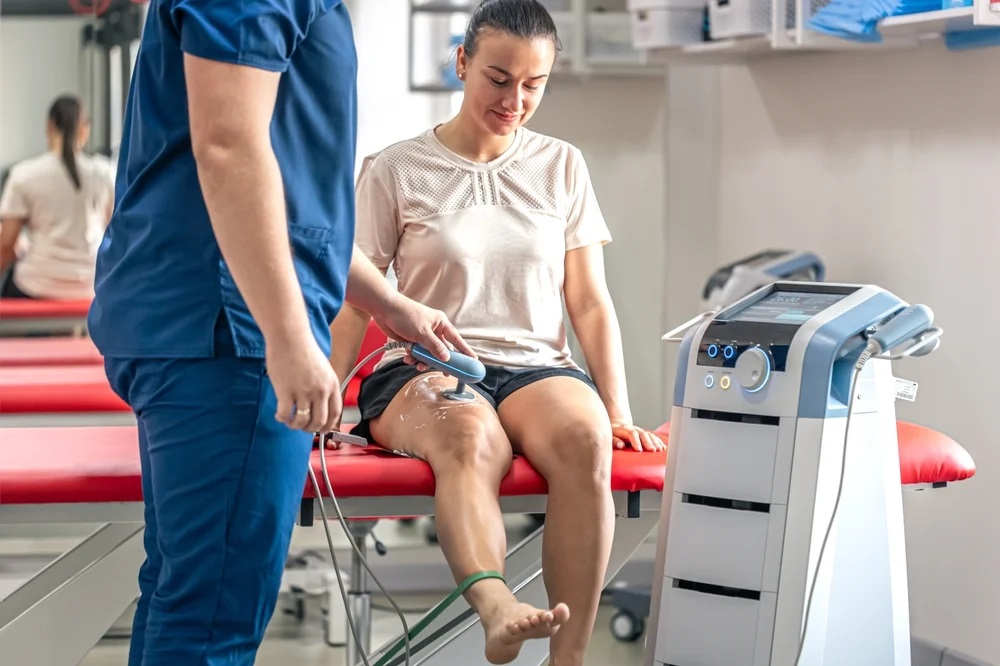
Shortwave Diathermy (SWD)
At Pramukh Advance Physiotherapy Center, we offer Shortwave Diathermy (SWD) as part of our advanced physiotherapy treatments to help relieve deep muscle and joint pain, reduce inflammation, and promote faster healing. Our experienced physiotherapists use SWD safely and effectively as part of customized treatment plans for a wide range of musculoskeletal conditions.
What is Shortwave Diathermy?
Shortwave Diathermy (SWD) is a therapeutic technique that uses high-frequency electromagnetic energy to generate deep heat in soft tissues like muscles, joints, and ligaments. The deep heating effect helps increase blood flow, reduce muscle spasms, relieve pain, and accelerate the natural healing process.
SWD is non-invasive, painless, and highly effective — especially for patients dealing with chronic or acute musculoskeletal conditions.
How SWD Works
Shortwave Diathermy delivers high-frequency energy (usually around 27.12 MHz) into the targeted tissues. This energy causes molecules within the tissues to vibrate, producing heat in deeper layers without discomfort.
Benefits of SWD include:
- Deep tissue heating and muscle relaxation
- Improved blood circulation
- Faster healing of soft tissue injuries
- Reduced inflammation and swelling
- Relief from chronic joint and muscle pain
- Increased tissue flexibility
Conditions Treated with Shortwave Diathermy
At Pramukh Advance Physiotherapy Center, SWD is used to treat a variety of conditions, including:
- Muscle spasms and stiffness
- Joint pain (shoulder, knee, hip, etc.)
- Tendinitis and bursitis
- Frozen shoulder
- Ligament sprains and strains
- Sciatica and low back pain
- Arthritis-related pain
- Post-surgical rehabilitation
- Sports injuries
Free ask question?
No. SWD is non-invasive and painless. You may feel a gentle warmth in the treated area, but it should never be hot or uncomfortable. If it is, let your therapist know immediately.
A typical SWD session lasts 15–30 minutes, depending on the condition and the treatment goals. Your physiotherapist will determine the appropriate duration for you.
The number of sessions varies depending on your condition’s severity and response to therapy. Some patients feel relief after just a few sessions, while others may require a longer course of treatment.
SWD is generally safe, but mild side effects like skin warmth or redness may occur temporarily. Burns are extremely rare when applied correctly by trained professionals.
No. Both are deep-heating modalities, but they use different types of energy. SWD uses electromagnetic waves, while ultrasound therapy uses sound waves. Your therapist may choose one or the other based on your specific condition.

